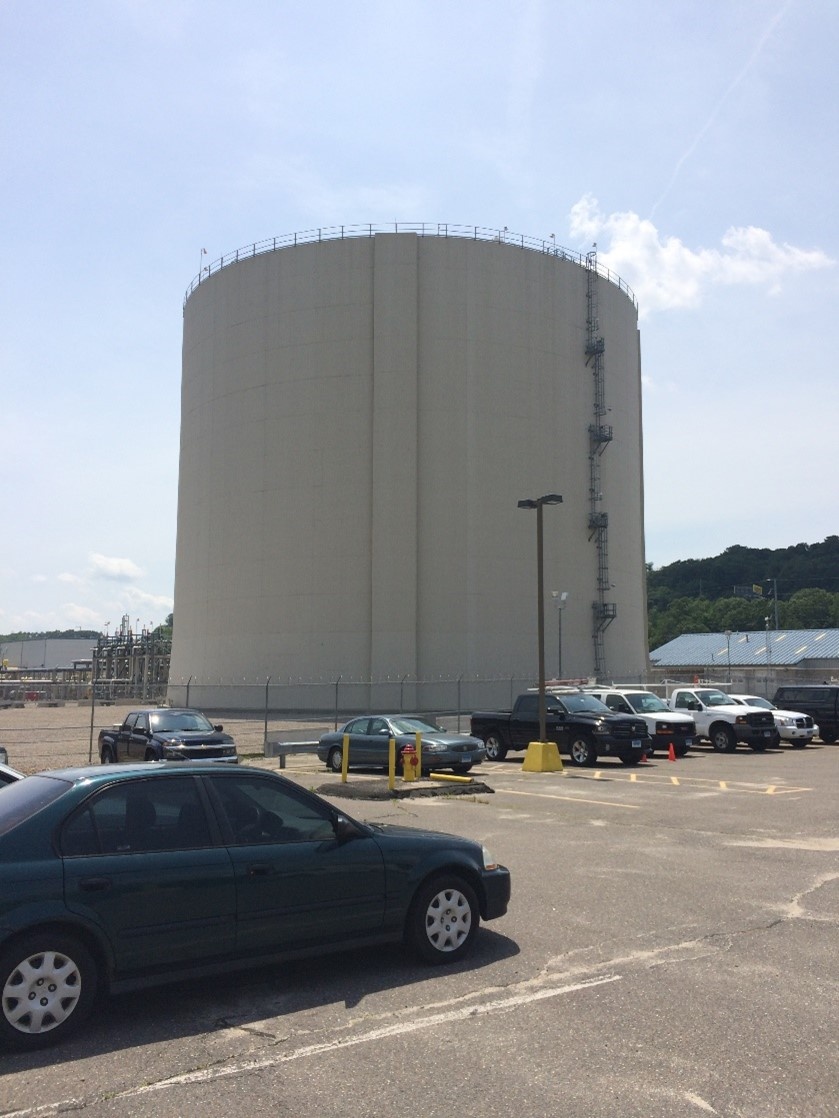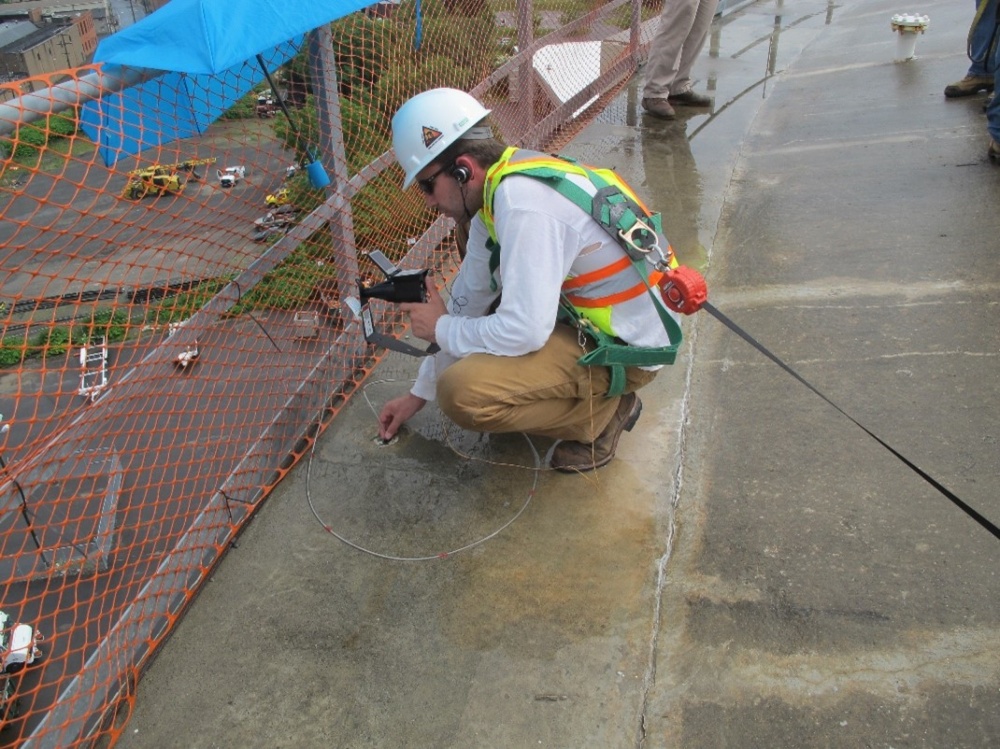Yankee Gas Liquid Natural Gas Tank

Services Applied by VCS Engineering
Project Description
VCS performed an investigation of a liquid natural gas (LNG) tank in Waterbury, CT to identify the extent and condition of voids located in the tank’s vertical post-tensioning ducts. Bonded PT duct voids were identified in a previous condition assessment conducted to develop appropriate maintenance strategies for the tank.
Project Issue
The vertical post-tension ducts extend 135 ft up the LNG tank wall. During the initial grouting operation, free water in the grout seeps into the interstitial space of the 7-wire strand tendons and rises to the top of the duct. At the same time, the dewatered grout settles and creates a void at the top of the duct. This phenomenon is called wick-induced bleed, and is a durability concern for grouted post-tension systems. The tank was 7 years old when the voids were discovered and the owner was concerned about the potential presence of soft grout, strand corrosion, and strand section-loss. Access into the side of the tank was not an option due to the significant height of the tank and the amount of reinforcing steel blocking access to the ducts from the exterior surface.

Project Solution
The inspection objectives were to identify the extent of voids, evaluate the condition of the exposed strands, identify if soft grout was present, and sample any water contained in the duct for chloride content, sulfate content, and pH.
VCS used an articulating borescope, 9 m long and 4 mm diameter, to visually inspect the interior of the ducts through the vent port located in the trumplate. Using the borescope, VCS was able collected video and images of the duct interior, strand condition, anchor plate condition, and the grout/void interface.
The inspection resulted in VCS identifying that the strands were generally in good condition, despite the presence of the void and some minor corrosion in one duct. There was no soft grout and the trapped water maintained a highly alkaline environment. VCS worked with the project’s structural engineer, grout supplier, post-tension installer, and general contractor to recommend re-grouting solutions.